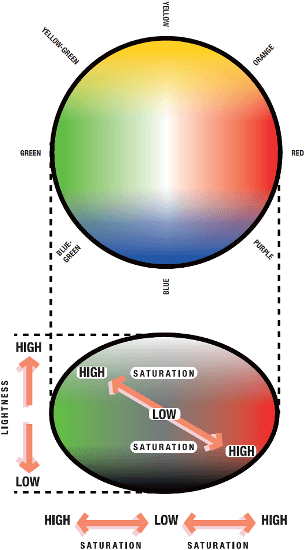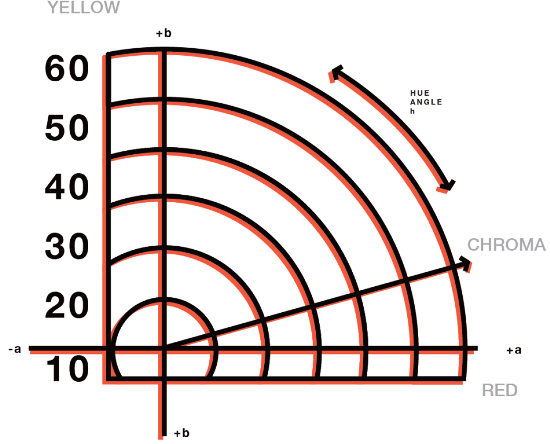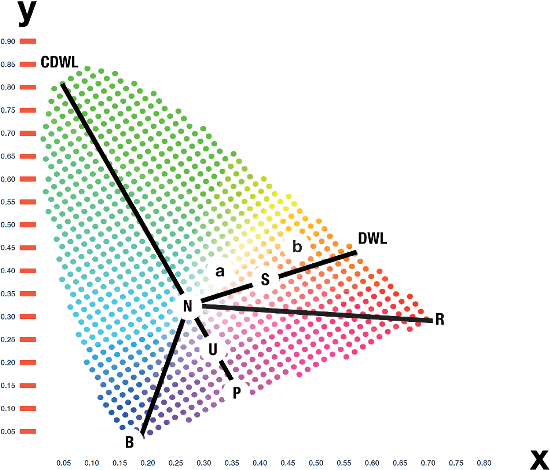Sponsored by AdmesyMar 13 2018
Colour wheels and spaces allow the similarities and differences between colors to be easily understood, whilst also visually demonstrating the relationships between all different colors.

Image Credit: Artem Kovalenco/shutterstock.com
The three parameters hue [color], saturation [purity or vividness], and lightness cover all colors and also form the foundation of graphical color spaces such as color wheels. In color wheels, the hues are situated along the outer boundaries of the circle with opponent colors on opposite sides: according to the opponent color theory, which states a color cannot be both green and red or yellow and blue. It is however possible to mix between two non-opponent colors.
Around the center of the color wheel, the unsaturated colors are situated with grey as center point.
Although the outer boundary of a color wheel displays all visible colors, it is not the same as the visual spectrum of different wavelengths beginning at UV towards [near] infrared. The color wheel also includes mixed purple colors which do not exist as a separate wavelength in the visual spectrum.

Changes in lightness and saturation for red and green. Image Credit: Admesy
3D Color Space
The 2D color wheel can be used as a basis for a 3D spherical model. A third dimension is added to the 2D model which lies perpendicular to the center of the color wheel and is used to signify the brightness or lightness. Maximum lightness [white] is situated at the top, with minimum lightness [black] at the bottom.

Dimensional spherical color model showing a number of colors, levels of lightness and saturation. Image Credit: Admesy
L*C*h* and L*a*b* Color Spaces
An example of a spherical color model is the L*C*h* color space. It is based on a circular color scale, quite like a color wheel, with polar coordinates which define the chroma [saturation] and hue.
The initial point of color notation using this color scale is a line drawn from the unsaturated center towards the completely saturated color red. Following this line from the center [zero saturation] towards the outer shell [maximum saturation], chroma [C] increases.
Hue [h] is determined as an angle starting from red at 0° towards yellow at 90°. Green and blue are positioned at 180° and 270°, respectively. The lightness axis L is perpendicular to the color circle and has a value between 0 and 100: the greater the value of L, the lighter the color.

Image Credit: Admesy
The L*a*b* color space utilizes the same spherical space as the L*C*h* space, with the parameter L for brightness.
Instead of polar coordinates, saturation and hue are determined by a Cartesian coordinate system: the a* value establishes the location along the green-red axis. Negative values for a* specify a green color, positive values red.
Values for b* can be positive [yellow] or negative [blue]. The benefit of color notations like L*a*b* and L*C*h* is that values are comparatively easy to interpret as the color they signify: a high value for lightness refers to a light color, the value for chroma establishes the level of saturation and the angle directly corresponds to the color itself.
Both L*C*h and L*a*b* color spaces are used to compare colors and identify variances between colors. Variances expressed as Δ [delta] can be established for each single parameter like ΔL*, Δa* or Δb*, but also as color difference as a single value. The total color difference ΔE* can be calculated according to the below formula:

From these formulas, the variance in hue ΔH* can be calculated as an independent value. Note that the hue variance is not calculated as a variance in metric hue-angle as the L*C*h* color space would propose, but as a metric hue variance.

CIE 1931
A color space still extensively used today is the CIE 1931 chromaticity diagram that translates the X, Y and Z values into Yxy.
Contrary to the spherical color spaces, the third dimension [lightness, Y] is not directly plotted into the graph and which results in a 2D color space. Hue and saturation are illustrated by means of coordinates x and y.

To the human eye (color-matching functions of the 1931 standard observer). Image Credit: Admesy
A vital characteristic of the CIE 1931 color space is that it is based on the reaction of the human eye. The least saturated colors are situated near the center white point. The outer locus is scaled by wavelengths of the visual part of the spectrum: meaning completely saturated colors on this locus can be done by a single wavelength producing source.
The straight line at the lower end of the color space connecting the red and blue ends of the locus directly, contain shades of bluish-purple towards reddish-purple and red. Colors along this ‘line of purples’ cannot be achieved by a single wavelength and are always a combination of many wavelengths.
Values for x and y are calculated according to the below formulas:
x=X/(X+Y+Z)
y=Y/(X+Y+Z)
Dominant Wavelength and Purity
In the CIE 1931 color space, the level of saturation is identified as purity: the more the color point is located towards the locus, the greater its purity. A line drawn from illuminant or white point N via the coordinates of sample color S, crosses the locus at a definite point.
The location of white point N can differ based on the application. At the intersection of the line from N through S with the locus established the dominant wavelength DWL: the wavelength that matches with the completely saturated color of the sample.
Purity is calculated using the formula given below based on the location of the sample’s color point on the line.
PURITY = (a) / (a + b)
The dominant wavelength [hue] and purity [chroma] are termed as the Helmholtz coordinates. For specific colors inside the Yxy color space, these values cannot be calculated as they do not possess a dominant wavelength: all colors within the triangle N, B and R cannot be established by drawing a line from the center towards the outer locus.
A line from N through sample color U would intersect the color space at the blue-red line at point P - which does not match to a single wavelength.

Image Credit: Admesy
Colors within this area can be conveyed according to their complimentary dominant wavelength [CDWL] which is situated at the opposite side of the illuminant point. The CDWL can be located at the site where the line drawn from sample point U through N intersects with the outer locus.

 Download Admesy's Guide to Light for More Information
Download Admesy's Guide to Light for More Information

This information has been sourced, reviewed and adapted from materials provided by Admesy.
For more information on this source, please visit Admesy.